Variations in Total Phenolic, Total Flavonoid Contents, and Free Radicals' Scavenging Potential of Onion Varieties Planted under Diverse Environmental Conditions
- PMID: 35406930
- PMCID: PMC9002954
- DOI: 10.3390/plants11070950
Variations in Total Phenolic, Total Flavonoid Contents, and Free Radicals' Scavenging Potential of Onion Varieties Planted under Diverse Environmental Conditions
Abstract
Genetic diversity and Agro-climatic conditions contribute significantly to the agronomic and morphological features of the food plant species, and their nutraceutical potential. The present study was intended to evaluate the impact of growing conditions on total phenolic and total flavonoid contents, and in vitro antioxidant potential in the bulbs and leaves of onion varieties planted under diverse environmental conditions. Standard analytical methods were used to quantify total phenolic content (TPC), total flavonoid content (TFC), and free radicals’ scavenging/antioxidant capacity. The impact of climatic and soil conditions was assessed using statistical tools. In general, onion varieties cultivated at three different locations viz. Kalar Kahar, Lahore and Swabi exhibited significant variations in TPC and TFC, and antioxidant activities. The bulbs and leaves of Mustang (V1) variety planted at Lahore and Swabi had significantly (p < 0.05), high levels of TPC (659.5 ± 6.59, and 631.1 ± 8.58 mg GAE/100 g, respectively). However, leaves of Red Orb (V2) and bulbs of Mustang (V1), and Golden Orb (V6), harvested from Kalar Kahar depicted the highest concentration of TFC (432.5 ± 10.3, 303.0 ± 6.67, and 303.0 ± 2.52 mg QE/100 g DW, respectively). Likewise, bulbs of V1 planted at Kalar Kahar, Lahore and Swabi exhibited maximum inhibition of DPPH, ABTS, and H2O2 radicals (79.01 ± 1.49, 65.38 ± 0.99, and 59.76 ± 0.90%, respectively). Golden Orb (V6) harvested from Lahore had the highest scavenging of OH radical (67.40 ± 0.09%). Likewise, bulbs of V1 variety planted at KalarKahar and Swabi had significant capacity to scavenge ferric ions (415.1 ± 10.6 mg GAE/100 g DW), and molybdate ions (213.7 ± 0.00 mg AAE/100 g DW). Conversely, leaves of Amazon (V8), planted at Lahore and Swabi depicted significant levels of DPPH, ABTS, H2O2 radical scavenging (90.69 ± 0.26, 63.55 ± 1.06, 51.86 ± 0.43%, respectively), and reduction of ferric ions (184.2 ± 6.75 mg GAE/100 g DW). V6 leaves harvested from Lahore and that of Super Sarhad (V3) from Swabi showed the highest inhibition of OH radical (61.21 ± 0.79%), and molybdate ions (623.6 ± 0.12 mg AAE/100 g DW), respectively. Pearson correlation and principal component analysis revealed strong relationships of climatic conditions, soil properties and elevation with TPC, TFC and free radicals’ scavenging potential in the bulbs and leaves of onion varieties. The variations in the total phenolic and flavonoid contents, and antioxidant potential of different varieties, and their associations with climatic and soil factors revealed the complexity of the growing conditions and genetic makeup that imposed significant impacts on the synthesis of secondary metabolites and nutraceutical potential of food and medicinal plant species.
Keywords: antioxidant activity; climate; environment; flavonoid; onion; phenolic; soil.
Conflict of interest statement
The authors declare no conflict of interest.
Figures
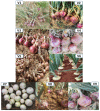


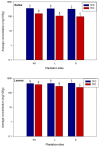
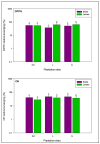
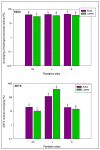
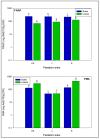


Similar articles
-
Antioxidant activities of ethanol extracts and fractions of Crescentia cujete leaves and stem bark and the involvement of phenolic compounds.BMC Complement Altern Med. 2014 Feb 4;14:45. doi: 10.1186/1472-6882-14-45. BMC Complement Altern Med. 2014. PMID: 24495381 Free PMC article.
-
Diversity of the Morphometric and Biochemical Traits of Allium cepa L. Varieties.Plants (Basel). 2024 Jun 22;13(13):1727. doi: 10.3390/plants13131727. Plants (Basel). 2024. PMID: 38999567 Free PMC article.
-
Optimization of Extraction Conditions for Maximal Phenolic, Flavonoid and Antioxidant Activity from Melaleuca bracteata Leaves Using the Response Surface Methodology.PLoS One. 2016 Sep 9;11(9):e0162139. doi: 10.1371/journal.pone.0162139. eCollection 2016. PLoS One. 2016. PMID: 27611576 Free PMC article.
-
Total anti-oxidant capacity, flavonoid, phenolic acid and polyphenol content in ten selected species of Zingiberaceae rhizomes.Afr J Tradit Complement Altern Med. 2014 Apr 3;11(3):7-13. doi: 10.4314/ajtcam.v11i3.2. eCollection 2014. Afr J Tradit Complement Altern Med. 2014. PMID: 25371557 Free PMC article.
-
Crystal Guava (Psidium guajava L. "Crystal"): Evaluation of In Vitro Antioxidant Capacities and Phytochemical Content.ScientificWorldJournal. 2020 Sep 1;2020:9413727. doi: 10.1155/2020/9413727. eCollection 2020. ScientificWorldJournal. 2020. PMID: 32952456 Free PMC article.
Cited by
-
Unveiling the Potential of Polyphenols as Anti-Amyloid Molecules in Alzheimer's Disease.Curr Neuropharmacol. 2023;21(4):787-807. doi: 10.2174/1570159X20666221010113812. Curr Neuropharmacol. 2023. PMID: 36221865 Free PMC article. Review.
-
Phytochemistry, Biological, and Toxicity Study on Aqueous and Methanol Extracts of Chromolaena odorata.ScientificWorldJournal. 2023 Oct 9;2023:6689271. doi: 10.1155/2023/6689271. eCollection 2023. ScientificWorldJournal. 2023. PMID: 37849963 Free PMC article.
-
Assessment of the phytochemical composition and antimicrobial properties of Tapinanthus bangwensis leaves hosted by the branches of Persea americana.BMC Complement Med Ther. 2023 Feb 3;23(1):34. doi: 10.1186/s12906-023-03860-w. BMC Complement Med Ther. 2023. PMID: 36737748 Free PMC article.
-
Mycorrhizal symbiosis alleviate salinity stress in pistachio plants by altering gene expression and antioxidant pathways.Physiol Mol Biol Plants. 2023 Feb;29(2):263-276. doi: 10.1007/s12298-023-01279-8. Epub 2023 Jan 23. Physiol Mol Biol Plants. 2023. PMID: 36875732 Free PMC article.
-
Synergistic effect of Trikatuk, a traditional Thai formulation, on antioxidant and alpha-glucosidase inhibitory activities.Heliyon. 2023 Jan 18;9(1):e13063. doi: 10.1016/j.heliyon.2023.e13063. eCollection 2023 Jan. Heliyon. 2023. PMID: 36711300 Free PMC article.
References
-
- Trchounian A., Petrosyan M., Sahakyan N. Redox State as a Central Regulator of Plant-Cell Stress Responses. Springer; Cham, Switzerland: 2016. Plant Cell Redox Homeostasis and Reactive Oxygen Species; pp. 25–50.
-
- Sytar O., Zivcak M., Neugart S., Toutounchi P.M., Brestic M. Precultivation of young seedlings under different color shades modifies the accumulation of phenolic compounds in Cichorium leaves in later growth phases. Environ. Exp. Bot. 2019;165:30–38. doi: 10.1016/j.envexpbot.2019.05.018. - DOI
Grants and funding
LinkOut - more resources
Full Text Sources

